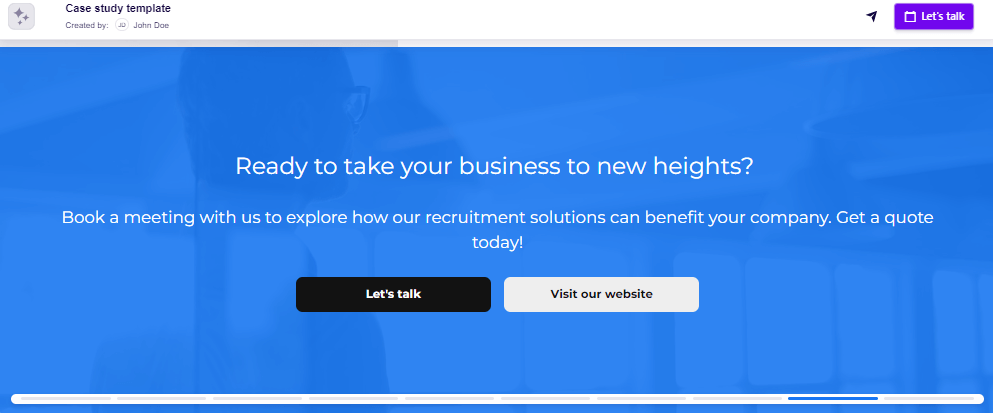5 Steps for Writing a Case Study for Business (+Templates)
Get professional tips for writing a case study that drives business impact. Learn the best format and research method to use alongside examples & templates.


Get professional tips for writing a case study that drives business impact. Learn the best format and research method to use alongside examples & templates.
Keep reading for a full breakdown ⤵
What is the purpose of a case study?
The purpose of a case study, usually, is to provide your prospective clients with specific examples of how your products or services can help solve business problems they might be facing.
Case studies legitimize your business activities allowing you to go beyond explaining what you do and focus on how well you do it.
And, in case you were wondering just HOW important case studies are, here’s an item of data to ponder: according to a DemandGen report, 78% of B2B buyers want to review case studies before making a purchase decision.
Another study by Uplift found that at the end of 2023, for the third year in a row, marketers ranked case studies the #1 most effective marketing tactic to increase sales—ahead of general website content, SEO, blog posts, social media, paid ads and other tactics.
NOTE: If you don't want a slide-by-slide breakdown and just want to see real decks, check out the best case study presentation examples.
How to write a case study introduction?
Introduce the company: Start by giving a brief overview of the company that’s the focus of the case study. Share who they are, what they do, and any relevant background.
Introduce the purpose of the case study—specify exactly what you were aiming to achieve.
Define the problem or the most significant challenge. For instance, low conversion rates, a technological issue or high costs. (It could also be a combination of such factors!)
Explain briefly what the solution to the problem was.
Share the most important results your actions produced. Don’t go into too much detail, a few key points will do. It’s best if you can quantify the results: numbers pop!
Keep it short. Usually, 2–4 paragraphs + a few bullet points with key results will do. Consider using an AI rewriter to help you break down complex sentences into clear and concise sentences that effectively convey your message.
Pro tip
While, as its name implies, this section comes at the beginning of your case study, write it last. First, craft the rest of your document, then pick the most important bits and compile them into the introductory overview.
How to write a “problem” section in a case study?
In a single sentence, describe your customer’s business challenges and objectives.
Explain the problem your customer faced that prevented them from achieving those objectives prior to working with you.
If that was the case, mention other solutions your client experimented with that didn’t work out and explain why.
Make it clear how the issue or problem impacted the client’s business results so that it’s easy to understand why a solution was badly needed.
How to write a "solution" section in a case study?
Focus on your customer’s experience in using your product or services.
Explain the process: say how long it took to get the solution up and running and what teams on your customer’s end were involved.
Highlight the features of your product or service that turned out to be the most beneficial to your customer.
If possible, attach or link to relevant assets that will work as real-life examples of your solution (unless, of course, the information is highly sensitive).
Always run your case study by your client’s marketing team before you go live. Even if you’re using direct quotes or verifiable results, it’s ultimately their decision whether or not to make certain information freely available.
Here’s how to write about results:
In a few bullet points, list numerical results your solution delivered to the client.
Ideally, you’ll want to include revenue-related data: increase in clients’ base, more demos booked, higher conversion rates, or optimized pricing.
If you can’t (or aren’t allowed to) share hard sales numbers, refer to softer KPIs: time saved, customer happiness scores, expanding the community, or enhancing brand visibility.
Make it blatantly obvious that such results are easily replicable.
Pro tip
If possible, by all means include quotes from your client. Results should speak for themselves, obviously, but showing the real human whose problems you solved makes for a much more powerful narrative. Plus, it further adds credibility to the case study. Start by preparing a list of powerful case study questions to guide your client interviews.
Try Storydoc for free for 14 days (keep anything you make for ever!)











